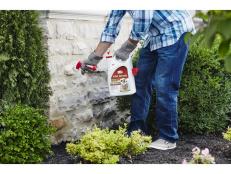Home Weatherization Tips
It's easy to feel the effects of a drafty door or window, but cold air can also seep into a heated home-or out of an air-conditioned one-through several other surprising sources. And even the smallest leak can rack up a big energy bill. In fact, the Department of Energy estimates that homeowners can save up to 30 percent on their monthly energy bills just by properly weatherizing their home.
You're probably aware of the benefits of weatherstripping doors and windows, but here's where other leaks are lurking and how to seal them:
The Fireplace
Chimneys are designed to let hot air escape from the house, and they do an excellent job-even when there's no fire going. When the fireplace isn't in use, keep the flue closed to prevent air from escaping. You can also buy chimney balloons that inflate to fit beneath the flue and prevent air from escaping; they deflate automatically if they come into contact with heat.
In the attic, check for gaps around the chimney. Building codes require that combustible materials such as insulation be 2 inches from a masonry chimney, so build a metal dam around the chimney for clearance. Seal with aluminum flashing and heat-resistant caulk.
Do It Yourself? Chimney work is wrought with tricky codes and potential fire hazards, so weekend warriors should generally steer clear.
Vents
Dryer vents and exhaust fans can whisk conditioned air out of a home and let outside air in. In homes with a kitchen exhaust fan, add a magnetic cover to prevent air from leaking in or out while the fan isn't in use. Bathroom exhaust fans should have an internal flapper damper to prevent air from coming in or out when the fan is off. Dryer vents typically have a flapper to reduce air leaks, but if the vent becomes clogged with lint, it can prevent the flapper from working properly. Check vents periodically to make sure they're free of lint, or install a dryer-vent seal.
Do It Yourself? There are risks in making a home too airtight. It can limit the air supply for heating appliances, and exhaust fans may pull combustion gases into the living space. A professional contractor can ensure there's adequate ventilation to prevent dangerous "backdrafting."
The Attic
Check for air leaks around plumbing pipes, furnace flues and electrical junction boxes. Gaps around plumbing pipe can be filled with expanding foam or caulk, and gaps around junction boxes can be caulked. Furnace flues are slightly more challenging. Pipes need to be at least one inch from combustible materials such as insulation, so seal with heat-resistant caulk and build a metal dam around the flue to prevent insulation from touching the hot pipe. Finally, determine whether the attic entrance is properly sealed by turning on the attic light at night and closing the door or hatch. If you can see light around the frame, use weatherstripping to prevent air from escaping through those gaps.
Do It Yourself? Novices can handle the weatherstripping, but sealing around hot pipes should be left to professionals familiar with building codes.
Electrical Outlets
Electrical outlets and switch plates can allow air to seep through the walls. Find leaks by waving a burning incense stick or a damp hand in front of the outlet cover; you'll be able to see the smoke waver or feel any drafts on your hand. The Department of Energy recommends installing foam gaskets behind outlet covers and switch plates to prevent air from coming through.
Do It Yourself? Yes, but be sure to turn the breaker off in the area where you're working.
The Extras
Add-ons such as recessed lighting, mail slots and wall air-conditioning units may add convenience and comfort to a home, but they also add the potential for air leaks. Caulk any gaps around mail slots, and seal around leaky light fixtures. If the insulation above a recessed light seems dirty, it's probably allowing air to escape. Remove window AC units before winter.
Do It Yourself? Novices can caulk gaps and remove window units, but only a professional should seal around recessed lighting, due to potential fire hazards.













































